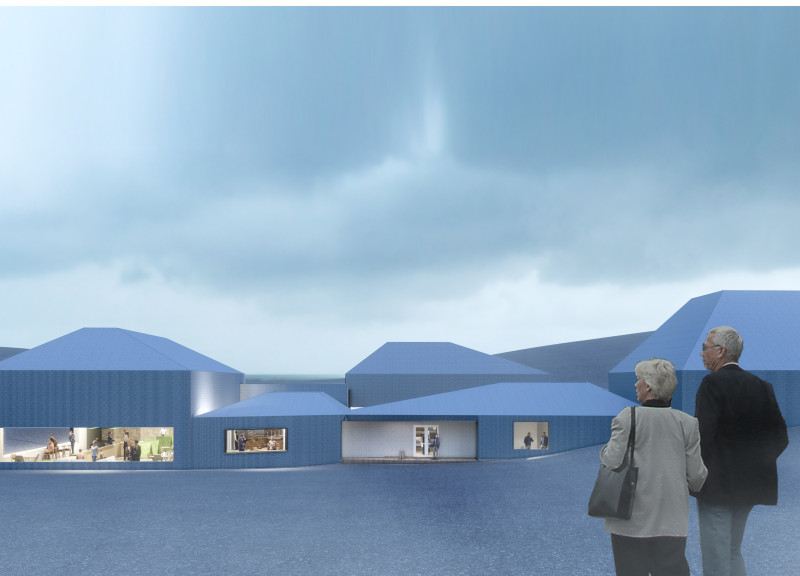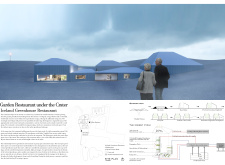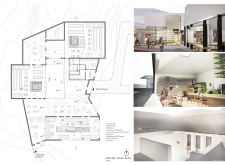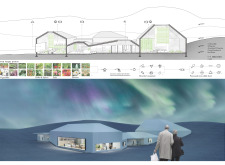5 key facts about this project
The design is located within the unique landscape of Hverfjall Volcano in Iceland, serving as both a greenhouse and restaurant. The concept emphasizes sustainability, combining the processes of growing food with an engaging dining experience. The building is partially underground, allowing it to blend naturally with the volcanic terrain. Utilizing geothermal energy efficiently, the structure maintains comfortable temperatures while minimizing its impact on the environment.
Design Integration
A vertical greenhouse is at the center of the project, surrounded by a courtyard that invites interaction between guests and the growing environment. This design allows for around 100 guests to gather in a space that feels open and connected to nature. The use of transparent glass walls around the courtyard enhances the views of the internal plants and the surrounding landscape, creating a sense of unity between inside and outside.
Sustainability Strategies
Sustainability is a primary focus of the design, with energy strategies including solar power and harvested rainwater. The architecture uses passive heating and cooling techniques, along with an efficient system to regulate temperatures inside the building. These features ensure a comfortable atmosphere for diners while keeping energy consumption low.
Connection to Food Source
The relationship between the kitchen and the greenhouse forms a direct link between food production and dining. An open kitchen located at the bottom of the vertical greenhouse allows fresh produce to be delivered straight to the tables. This process highlights the connection between the ingredients and their preparation, inviting guests to experience their meals in a more engaged way.
Automated systems within the greenhouse manage temperature, humidity, and light to support optimal growing conditions for various plants. This careful attention to detail extends throughout the design, making it functional both as a restaurant and as a living space for growth. The commitment to merging agricultural practices with the dining experience embodies a thoughtful approach to design within a natural setting.





















































